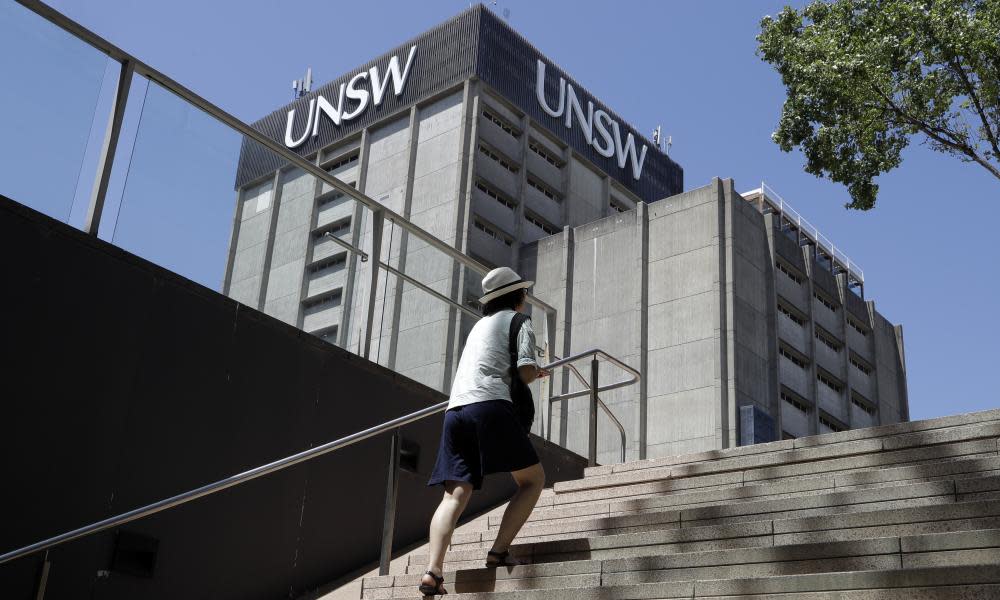Australian universities plan to ramp up in-person learning in early 2021

Australian universities are aiming to provide a “re-energised” university experience for the first semester of 2021, with an increasing number of in-person classes, and even a traditional orientation week for thousands of newer students who missed out last year.
Universities across Australia are aiming for more face-to-face teaching in 2021, even as the majority of lectures and large classes remain online, with most students continuing with a level of mixed learning – a model that became the norm last year.
The University of Canberra has confirmed that “more than two-thirds” of classes in the first semester of 2021 will return to face-to-face learning, while also promising that “weekly events” such as trivia and live music will resume.
Murdoch University in Western Australia has confirmed that all tutorials and laboratories will be conducted in person – a significant change from 2020 – while the Australian National University said it would “expect” all students who can study on campus to do so.
Related: Exclusion of international students jeopardises Australia’s future global standing – universities
The president of the University of Melbourne’s student union, Jack Buksh, also told Guardian Australia that plans were under way to hold a socially distanced, in-person orientation week, after students endured nearly a full year of online classes and months of lockdown.
Prof Merlin Crossley, the deputy vice-chancellor (academic) of the University of New South Wales, said the rollout of Covid vaccines during 2021 would mean that the year could become “a celebration” as student life returned to normal.
For term one, classes at the university will remain a mix of online and in-person, with most of the lectures still being delivered online. “We really want the tutorials, the labs and the practical things back,” he told Guardian Australia.
“Our intentions are really strong. We think for young people, and for students, the campus life is so important. So we are aiming to re-energise the campus as soon as possible.
“I am optimistic. The way Australia is heading, if we can roll out the vaccine to at-risk groups and keep the lessons learned from hotel quarantine going, I am optimistic that we will be coming back, and 2021 will be a bit of a celebration. You can feel the celebration around the world that the vaccine is being rolled out.”
At Murdoch University, the pro-vice chancellor (education), Kylie Readman, said: “Because we are allowed to in WA, all labs, tutorials and studios have face-to-face as the default. There is an option for online if the class is over 40 students.
“Covid restrictions would not allow us to have gatherings of more than 100 at the moment. Units that have a lecture and have under 100 students can proceed face to face. For larger gatherings we are giving staff more options.”
A spokesperson for the University of Sydney said half of its usual number of students had already returned to partial on-campus classes in the second half of 2020, and they expected this to rise in 2021.
Some courses with more practical requirements, such as veterinary science and visual arts, would “require” students to attend campus in person from semester two.
At the University of Melbourne, Buksh said the return of extra-curricular activities were just as important as the resumption of in-person class.
“What students really want is that life to university,” he told Guardian Australia. “That is what we missed last year.
“We still had that online teaching, but it was so hard to replicate that on-campus experience you get, which is what people most remember about their university time.”
Under a draft plan that is still dependent on Covid restrictions, University of Melbourne students will be able to return to campus in small groups for the traditional orientation week tour of clubs and societies. Students will be separated into distanced groups of 15, with staggered start times, and necessary health declarations and other guidelines.
Buksh told Guardian Australia the union was expecting 600 students a day, across five days, to take part.
“It’s first-year students and we also have students from last year who want to start that uni experience themselves,” he said. “We almost have two cohorts of students coming for the first time.”
Buksh said students were determined to bring back on-campus culture throughout the semester. Restrictions on the campus itself mean that these might be held off-campus.
“Clubs are doing a picnic at a park, or similar, all that stuff is coming back,” Buksh said. “The union theatre, the requirements of the outdoor amphitheatre, if we can get that back, we will be.
“The aim is definitely to get as much happening as much as we can.”
For the orientation week, there will also be an online component, using an “online festival platform” for students who are overseas, immuno-compromised or otherwise do not with to attend in person.
A University of Canberra spokesperson said the university’s student services would also begin hosting “games nights, welcome nights and industry trips”, as well as “market days during semester to help clubs and societies engage with students”.
Elsewhere, the University of Queensland has promised 90% of undergraduate courses will include some “on-campus components”, the University of Technology Sydney said “up to half” of classes will be delivered face to face, and Macquarie University has said “at least half” of domestic students would attend classes on campus.
A spokesperson for the Australian National University in Canberra said its “goal is for every undergraduate course to include face-to-face teaching, with remote options available for participants unable to travel to campus”.
“The university continues to expect those who can return to campus for the commencement of semester one on 22 February to do so, where possible.”

 Yahoo Movies
Yahoo Movies 
